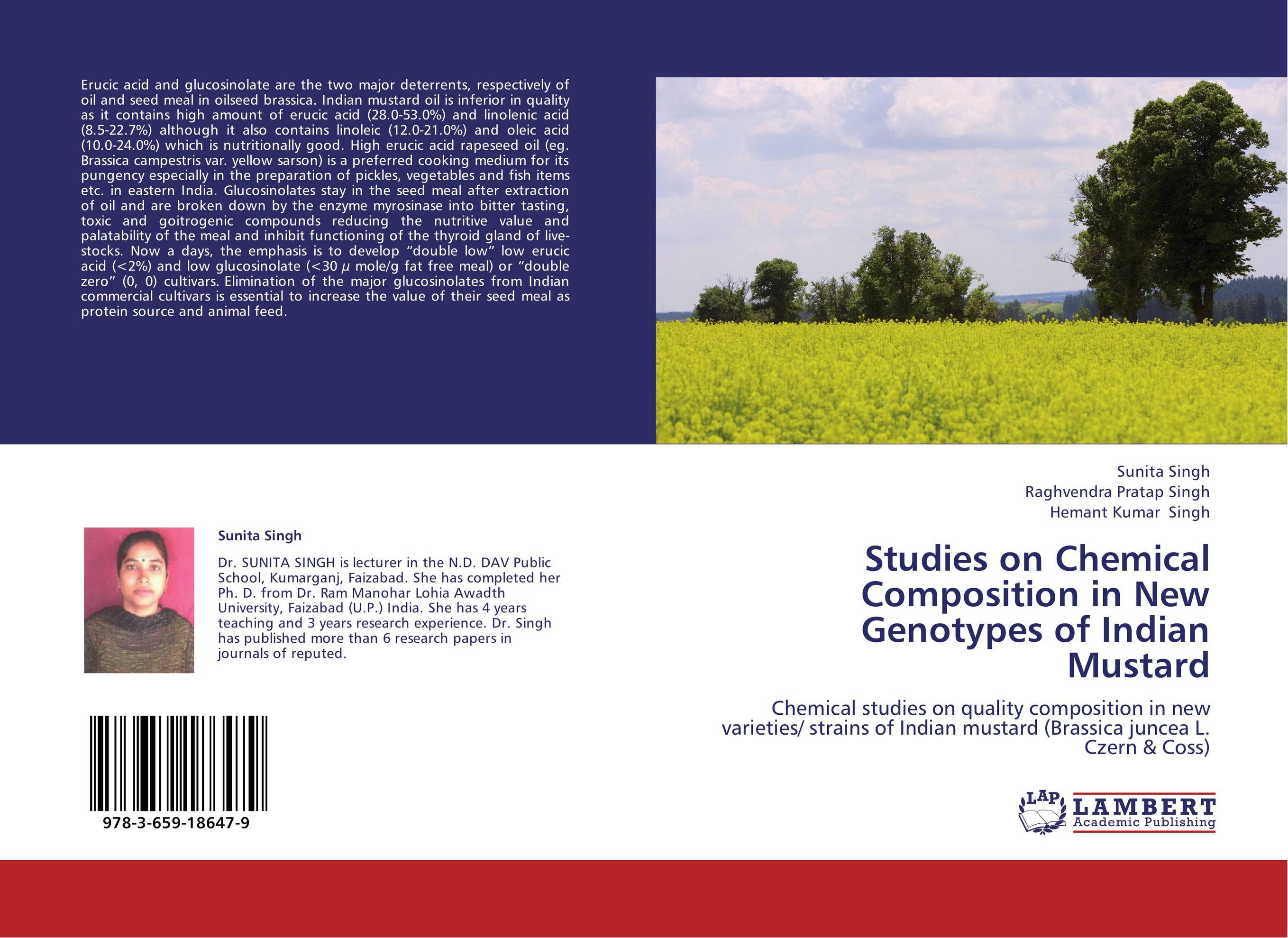| Поиск по каталогу |
|
(строгое соответствие)
|
- Профессиональная
- Научно-популярная
- Художественная
- Публицистика
- Детская
- Искусство
- Хобби, семья, дом
- Спорт
- Путеводители
- Блокноты, тетради, открытки
Studies on Chemical Composition in New Genotypes of Indian Mustard. Chemical studies on quality composition in new varieties/ strains of Indian mustard (Brassica juncea L. Czern & Coss)

В наличии
| Местонахождение: Алматы | Состояние экземпляра: новый |

Бумажная
версия
версия
Автор: Sunita Singh,Raghvendra Pratap Singh and Hemant Kumar Singh
ISBN: 9783659186479
Год издания: 2012
Формат книги: 60×90/16 (145×215 мм)
Количество страниц: 96
Издательство: LAP LAMBERT Academic Publishing
Цена: 31069 тг
Положить в корзину
| Способы доставки в город Алматы * комплектация (срок до отгрузки) не более 2 рабочих дней |
| Самовывоз из города Алматы (пункты самовывоза партнёра CDEK) |
| Курьерская доставка CDEK из города Москва |
| Доставка Почтой России из города Москва |
Аннотация: Erucic acid and glucosinolate are the two major deterrents, respectively of oil and seed meal in oilseed brassica. Indian mustard oil is inferior in quality as it contains high amount of erucic acid (28.0-53.0%) and linolenic acid (8.5-22.7%) although it also contains linoleic (12.0-21.0%) and oleic acid (10.0-24.0%) which is nutritionally good. High erucic acid rapeseed oil (eg. Brassica campestris var. yellow sarson) is a preferred cooking medium for its pungency especially in the preparation of pickles, vegetables and fish items etc. in eastern India. Glucosinolates stay in the seed meal after extraction of oil and are broken down by the enzyme myrosinase into bitter tasting, toxic and goitrogenic compounds reducing the nutritive value and palatability of the meal and inhibit functioning of the thyroid gland of live-stocks. Now a days, the emphasis is to develop “double low” low erucic acid (<2%) and low glucosinolate (<30 µ mole/g fat free meal) or “double zero” (0, 0) cultivars. Elimination of the major glucosinolates from Indian commercial cultivars is essential to increase the value of their seed meal as protein source and animal feed.
Ключевые слова: variety, Brassica Juncea, nutrition value of oil and cake



